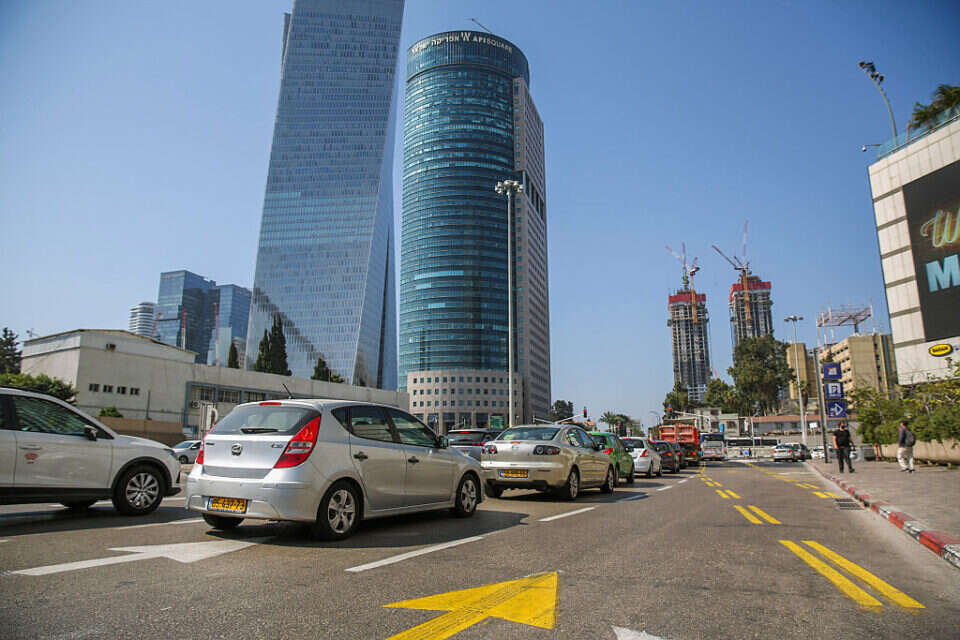Transportation Minister Miri Regev caused a stir when she decided to remove supervision from the public transportation route on the coastal road and lowered the number of passengers allowed on other intercity public transportation routes.
But while the fight over public transportation routes in Israel's intercity traffic arteries grabbed, and rightfully so, the headlines and the public discourse, the issue of public transportation routes within the cities and their promotion received less attention.
In most cases, the traffic lights in the city areas are the responsibility of the local authorities, therefore there are Israeli cities that have chosen to invest in the allocation of public transportation routes and those that have not done so at all.
With or without the NT: Examining Israel Today // Photo: Moshe Ben Simhon, Shmuel Buchris
So what is the difference between a city that is well networked with public transportation routes and one that is not?
A simple test comparing Tel Aviv, where the investment in public transportation routes per inhabitant is one of the highest in the country, against Netanya, which is at the bottom of the table, led to unsurprising results.
Precisely in crowded Tel Aviv, bus traffic during rush hours flows in most sections, while in Netanya, which has a much smaller traffic volume, passengers waited a long time on most parts of the road.
The data, collected by the "15 Minutes" association, an organization of public transportation consumers in Israel, show the extreme disparities between different localities in investment in public transportation routes.
The leading city in Israel in terms of public transport route per inhabitant is Tel Aviv, which has over 82 kilometers of fleet transport routes at a ratio of 17.59 centimeters per inhabitant, the highest in Israel.
It is important to note that in Tel Aviv, which is a magnet for workers and tourists from all over Israel, these numbers are good but far from sufficient.
Public transportation route in Tel Aviv,
After Tel Aviv is Haifa, where the Matron system jumps the ratio to 17.24 centimeters of public transportation lane per resident.
In third and impressive place is Rishon Lezion, where there is no concept of a separate bus system, but the city boasts a figure of almost 11 centimeters of public transport per inhabitant. After them are cities such as Holon, Ramat Gan Ashdod and Bat Yam. Bnei Brak, for example, is indeed very far from the bottom of the table with a
figure of 3.30 centimeters of net income per resident, but in a city whose majority of the population relies on public transportation such a figure is a big miss and a wake-up call for the city's finances.
Elsewhere in Israel the situation is much worse.
In Rehovot, Ashkelon and Lod, cities of more than one hundred thousand inhabitants, there are no public transport routes at all.
In Netanya, where our inspection was focused, a city of more than 200,000 people, only two hundred meters of public transport lane were allocated in the entire city.
The "15 Minutes" organization stated: "Public transportation routes are a central tool for improving public transportation, without the need for paving and creating new infrastructure that requires resources.
You can see huge differences in the quality of public transportation between cities that have a relatively large number of intersections, and cities that do not. It is impossible for public transportation passengers to withstand the traffic jams caused by cars. The cities of Israel and Gan to ensure continuity between all segments so that there is a fast journey."
"That is why it is also very important to take care of metropolitan authorities that will unite all the authorities in the same area and ensure the continuity of such interruptions. Unfortunately, metropolitan authorities fell foul of the Settlements Law last weekend, and this is a very problematic move that will delay the improvement of the TAB.
In the meantime, action must be taken so that each city paves the way for gaps in its area and ensures as much continuity as possible."
were we wrong
We will fix it!
If you found an error in the article, we would appreciate it if you shared it with us

